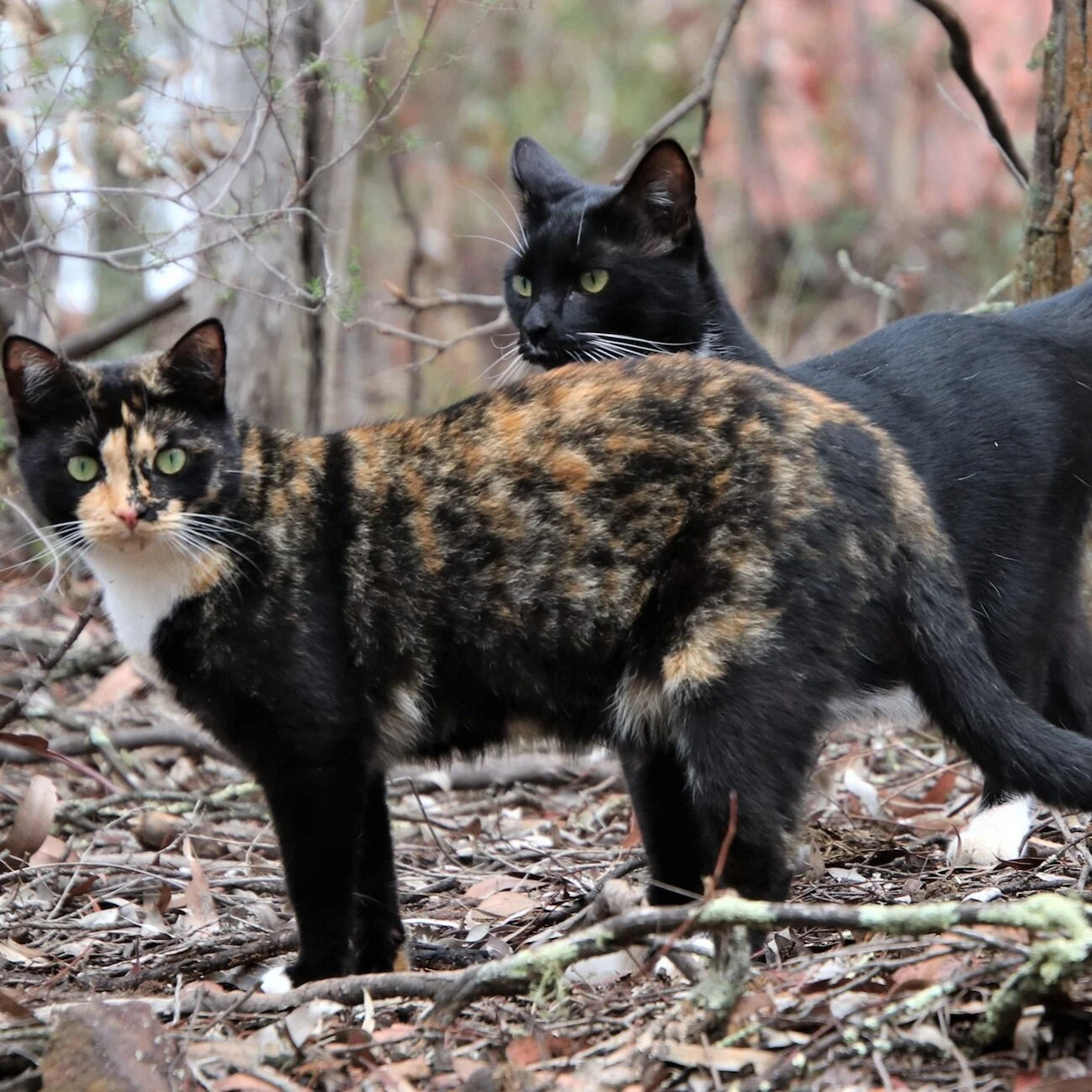world stray animal day
by nelle chapman, new south wales-BASED MEDIA STRINGER
Koda and Waylon, Nelle’s rescue dogs
“Where did you find that dog?” Enquires my son as I pull up to the gate with yet another stray animal. It’s a commonly asked question as I’m known for picking up lost dogs and finding their owners. We’ve been very successful in re-connecting animals with their owners, with the exception of one many, many years ago; an old kelpie, Old Red Dog, who we think may have fallen off a truck or ute. His pads were worn as he’d done some miles and we desperately searched, called and looked everywhere to find his owner…to no avail. So Old Red Dog lived on our patch of dirt raising our babies and the young upcoming pups for years. He’s now buried in the orchard along with all the other pets and poddy’s that have come and gone throughout my life. Most of our pets are re-homed animals that someone didn’t want and ended up in a pound or they’re passed onto us by someone who knew we’d take them in.
Nelle’s rescue cats Mitten and Scardy
Our latest additions are comfortably curled up in different parts of the house and our most recent re-home is running around madly chasing roos off the lawn and barking at strange sounds that are very new to this four-legged member of our family.
However, unfortunately not all abandoned or stray animals end up in homes where they are loved. World Stray Animal Day is marked each year on April four to raise awareness of all the stray animals across the globe. It’s a good opportunity to take a moment to actively think about the huge number of stray and abandoned animals that exist. The definition of a stray is defined as a domestic animal that is wandering at large or lost, and those that are caught end up in animal shelters and rehoming centres across the world. Sadly, in some instances when there is not enough room in the shelter or funds to save stray animals, they can be euthanised. In Australia, lost and stray animals that don’t end up in shelters can be classed as ‘feral’ and ‘wild’ and they can cause much damage to native wildlife and livestock on farms, it’s a growing problem and the cost of control is increasing each year.
Ways to decrease the lost and stray animals of the world include spaying, neutering and microchipping animals but it’s a complex problem that doesn’t have a quick fix. Many animals handed into shelters do have microchips but frequently microchip details are out of date or remain in the original breeders’ names. Given microchips can also fail it’s a great idea to have another form of identification on your pet.
The newest member of Nelle’s family, Waylon, a Kelpie Koolie cross
Some microchips are not lifetime registered and the database may be different for each state too, which can add another level of challenge to the identification process when a pet goes missing. Animals that are not rescued, identified, de-sexed and re-homed continue to wander and breed and so the vicious cycle continues.
Shelters and animal welfare leagues encourage the messaging, “adopt don’t shop” to promote the re-homing of strays and to prevent the operation of puppy farms. My social media feed often serves up posts about lost pets or animal shelters seeking help, and foster care or animal adoption requests. The current Covid19 crisis has added to the burden on these centres and this week RSPCA NSW launched a callout to re-home over 2,500 animals they had in their care as the pandemic has reduced to their ability to sufficiently care for all the animals. Health experts have advised that you can’t catch the virus from your pets, so you don’t need to surrender them, but the public often responds from a place of fear and act without receiving factual advice.
So, what can YOU do to help the stray animals of the world find a warm bed to sleep in, put food into their bellies and show them the love they deserve? YOU can raise awareness about stray animals, support your local animal shelter, become educated about the best ways to keep your pets safe, ensure their microchip details are up to date, add another form of identification and if you are looking for a new member of the family check out the wonderful shelters and rehoming centres across the country.
Today, I encourage you to share a picture of your loved animal (whatever it may be) across social media platforms with the hashtag #strayfie to increase exposure and build awareness.



